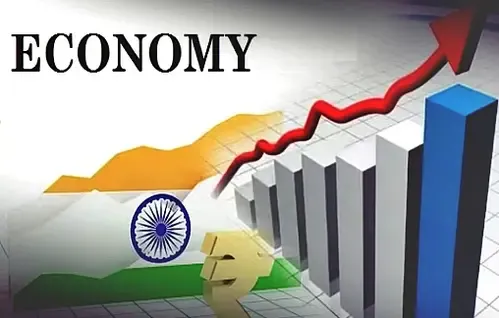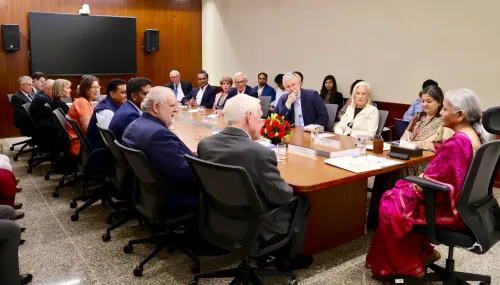Is S&P Rating's Growth Projection for India Surprising?

Synopsis
Key Takeaways
- S&P's rating emphasizes India's economic potential.
- Projected GDP growth of 6.5% is realistic.
- US tariffs will have minimal impact.
- Government spending quality has improved significantly.
- Debt-to-GDP ratio expected to decline.
New Delhi, Aug 15 (NationPress) The rating of India has not accurately reflected the nation’s economic fundamentals for nearly a decade. The recent action by S&P emphasizes that India's rating should have been significantly higher, as noted in a report by SBI Research.
The report highlights that S&P's forecast for India's real GDP growth at 6.5 percent is a more realistic assessment compared to other projections.
Furthermore, the rating agency suggested that the impact of US tariffs will be minimal and will not disrupt India's long-term economic growth.
This is due to the fact that with sector-specific exemptions on pharmaceuticals and consumer electronics, the portion of Indian exports impacted by tariffs is relatively low, at just 1.2 percent of GDP.
Looking ahead, the current account deficit is anticipated to remain between 1.0-1.4 percent for the years 2025-2028. The Consumer Price Index (CPI) is projected to stay within the 4-4.5 percent range until 2028, according to SBI Research's citation of S&P's rating projections.
The agency noted that the quality of government spending has seen improvement over the last five to six years, with capital expenditure allocations rising to 3.1 percent.
S&P Global Ratings acknowledged that India's inflation expectations are now more stable compared to a decade ago.
The agency forecasted a reduction in the general government debt-to-GDP ratio, predicting it will drop to 78 percent by fiscal 2029, down from 83 percent in fiscal 2025.
In its latest report, S&P Global Ratings elevated India's long-term sovereign credit ratings from BBB– to BBB in August 2025, maintaining a stable outlook.
Additionally, the agency upgraded the transfer and convertibility assessment to A–, which reflects the risk of a government imposing capital or exchange controls that could hinder an entity's ability to convert local currency into foreign currency or transfer funds abroad.
Previously, S&P had revised India's rating outlook to positive from stable in May 2024, citing robust economic growth and enhanced government expenditure quality.
The rating decision is based on three primary observations: credible fiscal consolidation, a strong external position, and well-established inflation expectations.
However, the risk to the rating arises from a perceived lack of political will towards fiscal consolidation. Continued reforms and a decrease in the public debt-to-GDP ratio could lead to further upgrades, as indicated by SBI Research.









